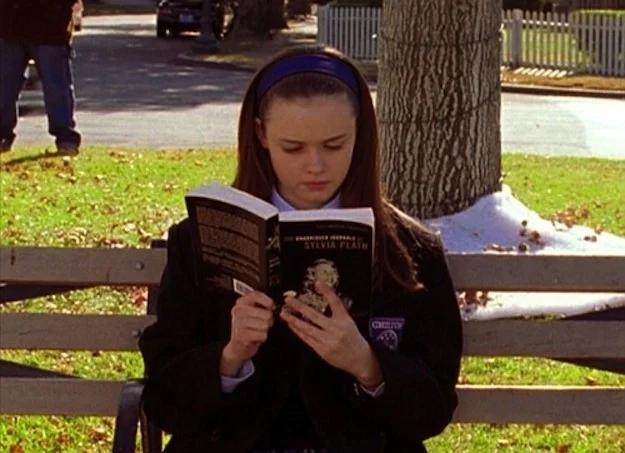The leaves turn brown, the Starbucks menu shifts and a new school year rolls around; fall is full of changes. But there is one thing that unites me, my friends and millions of others across the world: “Gilmore Girls.” I started my yearly “Gilmore Girls” rewatch on Aug. 8, but most choose to stream the seven-season series for however long their autumnal spirit lasts.
There were over 9 million views of just season one of “Gilmore Girls” in the second half of 2023, according to the Netflix bi-annual streaming report. And a relatively small but mighty percentage of that number are Oak Park and River Forest High School students thinking about higher education possibilities, just like Rory Gilmore.
“All of the kids at her school were trying to get into Havard or Yale. It kind of implied that to ‘make it’ in life, you have to go to an Ivy. And then seeing Rory at Yale and… the campus it was all so beautiful and impressive,” said senior Rosie Ondrla.
To many, Rory Gilmore’s time at Yale is the epitome of the picturesque college experience. The “Gilmore Girls” version of the Ivy League is a beautiful and symbiotic community. Yale is a beacon of safety and knowledge for all of its students, who happily partake in classes, nights out and school events without ever acknowledging their privilege to be a part of such an elite institution. Yet, hidden deep in the shadows of the ivy-covered halls are the dark spots of rejection and heartbreak.
The top 20 national colleges are the Ivies, MIT, Stanford, and a few other institutions, at least according to the U.S. News and World Report national university rankings. Well over 1 million students submitted applications to these 20 schools last year (according to data compounded from each top school’s website).
Each of these students bought into the powerful allure of these prestigious institutions. Yet, with acceptance rates ranging from Caltech’s (ranked third) abominably low 2.7% to Notre Dame’s (ranked twentieth) comparatively lenient 12.9%, a large majority of students had their dreams stomped on by the ruthlessness of the college admissions cycle.
High performing students are constantly bombarded with the statement “college admissions are a lottery.” Yet, for many, it is impossible to ignore the dream of ending up at a school with a powerful name.
In order to rank and compare colleges, U.S. News and World Report considers over 20 factors. They quantitatively weigh graduation rates, post-college performance, peer assessment and admitted students’ ACT/SAT scores (if applicable) when deciding each university’s ranking.
However, it is my steadfast belief that a lot more than test scores and graduation rates determine the best-fitting school for a student. Besides name and national ranking, little differentiates the Ivy towers in Boston, New York and North Carolina from those in Bloomington, Columbus and Urbana-Champaign.
It’s important to remember that any school we choose can provide all of the benefits of a great college education: career preparation, committed educators and engaging student activities. But most importantly, we will all find our own niche or corner at any of these institutions, just like we did at OPRF.
“As long as you keep an open mind throughout the application and decision process, you will be able to create a good experience wherever you end up. There’s no one school for one person,” said senior Anna Breuer.
OPRF students are resilient. We can find success, enjoyment and fulfillment wherever we end up. That is what distinguishes us from the fictionalized, doe-eyed Rory Gilmore: she only glimpses at the ivy-covered, highly-ranked surface, while we look inside to see which school is truly the best for us.
Fall is full of changes, but as the seasons turn once more, we will be forced to make tough choices. But we will remember to consider all factors, and not let Netflix shows or narrow-minded national rankings shape our future.













